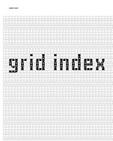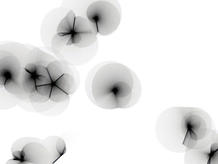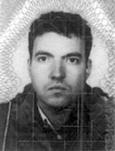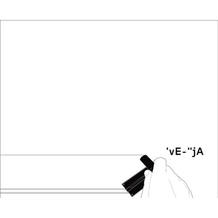Rheo
(2009)by Ryoichi Kurokawa is a new form of audiovisual expression inspired by the constant flux of landscapes. Kurokawa tends to eliminate the boundaries of our physical perception.
Based on concrete images & HD field recordings, Ryoichi Kurokawa transfigures and distorts original analogue material with digital processes. This – very much alike the human brain – represents memory where visual and auditory perception is reconstructed in an unconscious way. Thus virtual images and reality merge in an uncontrollable way. Ryoichi Kurokawa's time-based audiovisual design is displayed in a 3dimensional digital mode to see sounds, listen to pictures and read an audiovisual language.
The title of Kurokawa's new project Rheo is inspired from the famous expression of Greek philosopher Heraclitus of Ephesus panta rhei, which means everything is in a state of flux. Heraclitus alluded to his parable: "You can never cross twice the same river" because both water and person will temporally have changed.
Rheo is a new form of audiovisual expression, which tends to eliminate the boundaries of our physical perception where the essence lurks in the transition, as in the law of life, nature or beauty where everything is evanescent.
Three dimensional pixel sculptures are the result of Ryoichi Kurokawa's audiovisual synthesis. Kurokawa destructs and reconstructs architectonic and organic abstractions with precision, coercing a complete surrendering of the senses. A minimal, yet chaotic conflux of visual and auditory perception merges into an experience of memory and ambiguity where virtual and actual images are no longer distinguishable. Kurokawa uses what he calls an "audiovisual organ" to compose spatial-time sculptures out of digitally generated material, formed from analogue field recordings. Abstract sound and imagery are precisely synchronized and juxtaposed, asserting a form of glitch minimalism re-assembled into complex and highly rhythmic audio-visual landscapes. Kurokawa accepts sound and imagery as a single unit, constructing precise and exquisite computer-based works that demonstrate a unique audio-visual language.
Source: Cimatics







